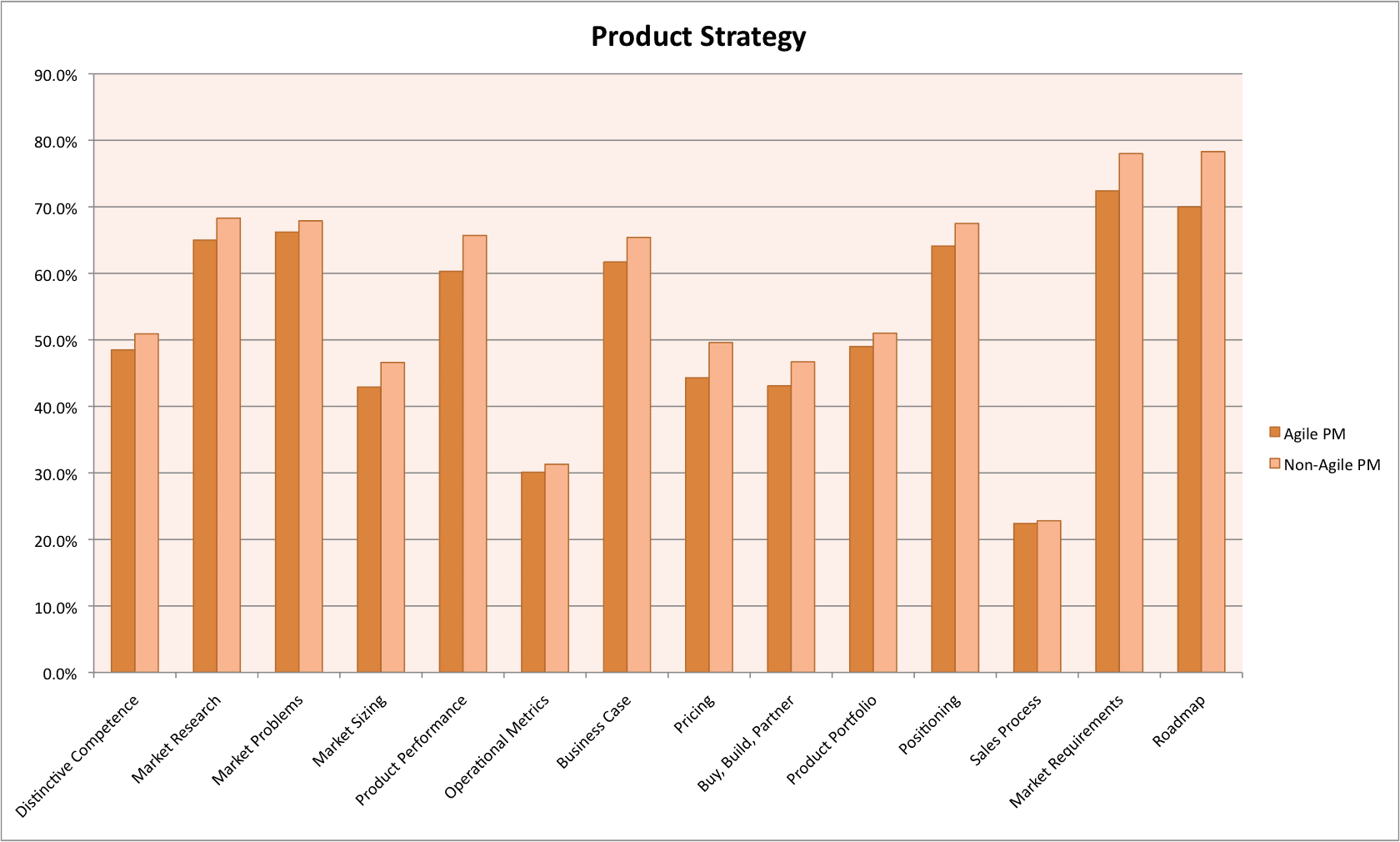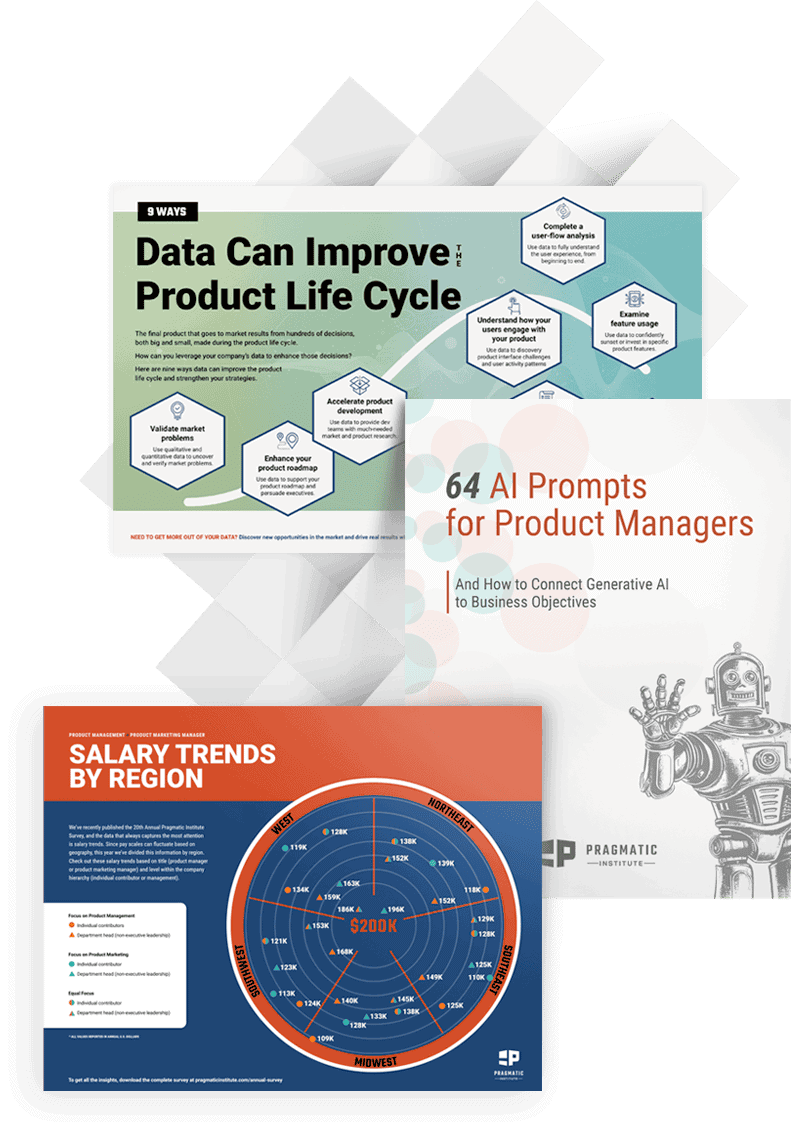[Originally published at Write That Down blog]
Agile.
That word means different things to everyone. To me, it really means being efficient – and leveraging the best parts of a team.
Of course, there are many different facets and “things” to agile – scrum, extreme, DSDM, getting real, etc… But what do these all mean to organizations and product managers?
Pragmatic Institute’s Annual Product Management and Marketing Survey can definitely shed some light on it for us. I’ve taken a pretty straightforward approach to this post, because hey — I’m a pretty pragmatic guy (no pun intended). I like to facts to be presented to me, with some analysis/thoughts/opinion around them and then I can draw my own conclusions.
So that’s what I’ve tried to do.
Just as a preface – I firmly believe in agile practices. And not just because they have cool terms and names like scrum and sprint and stories. But because they really do lend themselves well to where I have chosen to spend my career – in technology start-ups. Lightweight, super-effective, and while not everyone buys into the methodology, I’ve never seen the core of them fail a small company.
With that, let’s get to it.
Agile Product Manager Demographics
The first step is looking at the typical agile product manager. Let’s look at some demographics:
- Average agile PM salary: $104k
- Typical experience level for agile PMs: 6-10 years
- The large majority have degrees – predominantly bachelor degrees and MBAs
- Most define themselves as being somewhat technical
- The average age is 39
- Predominantly Male
This is very interesting. I think this may scare some people – especially the younger folks in the audience. Don’t be.
You don’t need to have 10+ years and be over 35 to be successful as an agile PM. However, I do think this proves there are a lot of organizations out there that newer PMs can get involved in – and there are some really experienced folks out there that can step up to the plate and be great mentors.
And that just means the world will get even better products as a result, which is always a good thing.
So now that we have an idea of the typical agile PM demographic, let’s get to the meat of the data – what do agile PMs spend their time on?
Agile Product Manager Activities
There are a couple of complexities to this aspect of my analysis. The first is understanding that I don’t believe in requiring a Product Owner to be present in order to successfully have agile-based product teams. That being said, they can play a tactically positive role based on the scale of the organization. Really, they need to be there to help the PM out so they can remain active in their most important activities – which should be strategic.
One of the biggest traps agile PMs can fall into is firefighting. Because things are happening so quickly, there is a strong tendency to really get bogged down in the day-to-day. So – let’s see if that’s happening.
I’m actually pretty shocked at how this turned out. I thought for sure I would see some huge variances in certain activities, so I’ll attack the general points.
There’s some great stuff in here – and it shows that PMs are spending their time in the right places, and it doesn’t appear as though agile PMs are fighting many more tactical fires than non-agile PMs. I’d be lying if I said it didn’t make me smile that almost 20% of folks that responded really aren’t spending time on the sales process.
I think this does show that agile PMs could be spending some more time on a roadmap, however. I always like to keep a high-level view of the backlog on-hand that gets updated regularly and discussed. In addition, I think all PMs could be spending some more time on defining and reviewing metrics. Those things are critical and they do tend to get ignored; I’m guilty of this as well.









